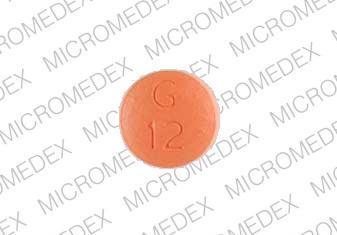Reminyl and Alcohol/Food Interactions
There is 1 alcohol/food/lifestyle interaction with Reminyl (galantamine).
Galantamine Food/Lifestyle
Moderate Food Interaction
ADJUST DOSING INTERVAL: The administration of galantamine with food and adequate fluid intake may reduce the impact of nausea, vomiting, diarrhea, anorexia, and weight loss that are commonly associated with acetylcholinesterase inhibitors (AChEIs). According to product labeling, the administration of food with various galantamine formulations (e.g., liquid, immediate-release tablets, modified/extended-release capsules) has no significant effect on the systemic absorption (AUC) of galantamine. While the presence of food has been shown to delay the rate of absorption (Tmax) and reduce peak concentration (Cmax), these changes are unlikely to be clinically significant. For example, when galantamine modified release was given after food, Tmax increased by approximately 30 minutes. Similarly, in 24 healthy elderly subjects, the presence of food with galantamine immediate release tablets (12 mg twice a day) delayed the Tmax by 1.5 hours and decreased the Cmax by about 25% without affecting the AUC.
MONITOR: Grapefruit and grapefruit juice may increase the plasma concentrations of galantamine, which is partially metabolized by the CYP450 3A4 isoenzyme. The proposed mechanism is inhibition of CYP450 3A4-mediated first-pass metabolism in the gut wall by certain compounds present in grapefruit. Inhibition of hepatic CYP450 3A4 may also contribute. The interaction has not been studied with grapefruit juice, but has been reported with both moderate and potent CYP450 3A4 inhibitors. When study subjects (n=16) received the potent CYP450 3A4 inhibitor ketoconazole (200 mg twice daily for 4 days) with galantamine (4 mg twice daily for 8 days), the systemic exposure (AUC) of galantamine increased by 30%. However, when study subjects (n=16) received the moderate CYP450 3A4 inhibitor erythromycin (500 mg 4 times daily for 4 days) with galantamine (4 mg twice daily for 6 days), the AUC of galantamine only increased by 10%. In general, the effects of grapefruit products are concentration-, dose-, and preparation-dependent, and can vary widely among brands. Certain preparations of grapefruit (e.g., high dose, double strength) have sometimes demonstrated potent inhibition of CYP450 3A4, while other preparations (e.g., low dose, single strength) have typically demonstrated moderate inhibition. While the clinical significance of this interaction is unknown, increased exposure to galantamine may lead to AChEI related adverse effects such as vagotonic effects on the heart rate (e.g., bradycardia and heart block), neurologic side effects (e.g., seizure activity), respiratory distress, bladder outflow obstruction, dizziness or syncope, nausea, vomiting and/or diarrhea.
MANAGEMENT: According to product labeling, galantamine should be administered with food and adequate fluid intake to reduce the impact of cholinergic-related gastrointestinal adverse effects (e.g., nausea, vomiting, diarrhea, anorexia, and weight loss). Caution and closer monitoring for AChEI related adverse effects may advisable if galantamine is used in combination with grapefruit and/or grapefruit juice. Modified and/or extended-release formulations must also be swallowed whole and not crushed, chewed, or divided.
References (6)
- (2024) "Product Information. Galantamine Hydrobromide ER (galantamine)." Aurobindo Pharma USA Inc
- (2024) "Product Information. Galantamine Hydrobromide (galantamine)." Aurobindo Pharma USA Inc
- (2022) "Product Information. Gaalin (galantamine)." Auro Pharma Inc
- (2023) "Product Information. Galzemic (galantamine)." Zentiva Pharma UK Ltd
- (2023) "Product Information. Galantyl (galantamine)." Viatris UK Healthcare Ltd
- (2020) "Product Information. Auro-Galantamine ER (galantamine)." Auro Pharma Inc
Switch to consumer interaction data
Reminyl drug interactions
There are 444 drug interactions with Reminyl (galantamine).
Reminyl disease interactions
There are 6 disease interactions with Reminyl (galantamine) which include:
More about Reminyl (galantamine)
- Reminyl consumer information
- Check interactions
- Compare alternatives
- Drug images
- Side effects
- Dosage information
- During pregnancy
- Drug class: cholinesterase inhibitors
Related treatment guides
Drug Interaction Classification
| Highly clinically significant. Avoid combinations; the risk of the interaction outweighs the benefit. | |
| Moderately clinically significant. Usually avoid combinations; use it only under special circumstances. | |
| Minimally clinically significant. Minimize risk; assess risk and consider an alternative drug, take steps to circumvent the interaction risk and/or institute a monitoring plan. | |
| No interaction information available. |
See also:
Further information
Always consult your healthcare provider to ensure the information displayed on this page applies to your personal circumstances.


